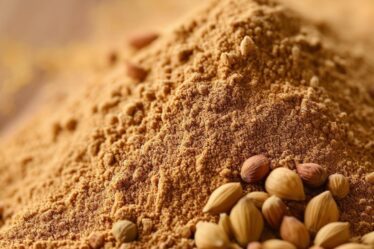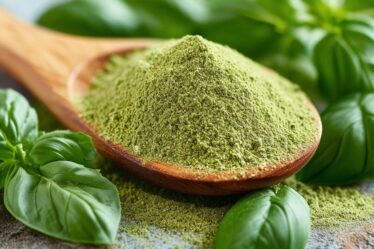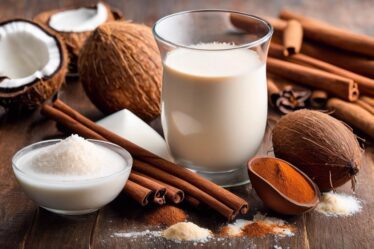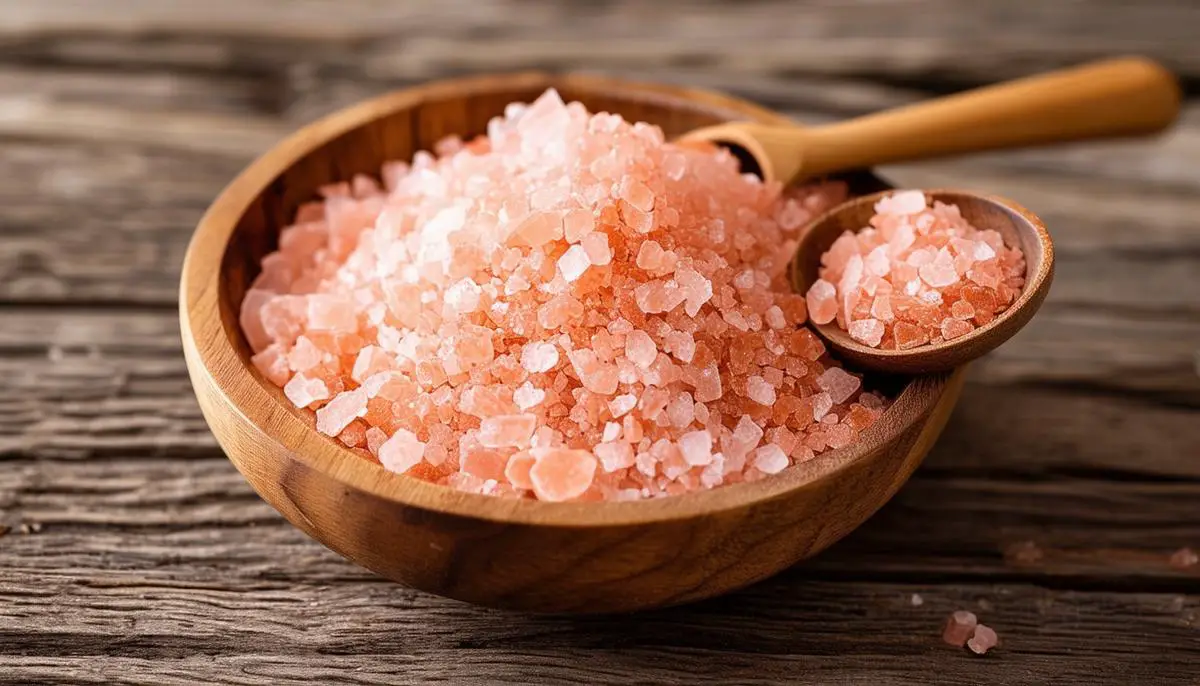
Origins and Composition
Himalayan salt, extracted from the Khewra Salt Mine near the Himalayas in Pakistan, is about 250 million years old. Primarily composed of sodium chloride (98%), Himalayan salt's pink hue comes from trace minerals such as iron oxide, magnesium, potassium, and calcium. These minerals contribute to its color and subtly enrich its flavor compared to more processed salts.
The specific geography of the Khewra Salt Mine contributes unique geological influences on the salt's composition. Situated near the towering Himalayas, the areas surrounding the mine have undergone considerable shifts throughout millennia. This geographic and geological journey endows Himalayan salt with properties distinct from salts harvested from other parts of the world.
The unrefined aspect of Himalayan pink salt allows it to retain its mineral content—and its pink pigment—better than more industrially treated alternatives, providing seasoning and a touch of ancient mineral enrichment to every dish it graces.
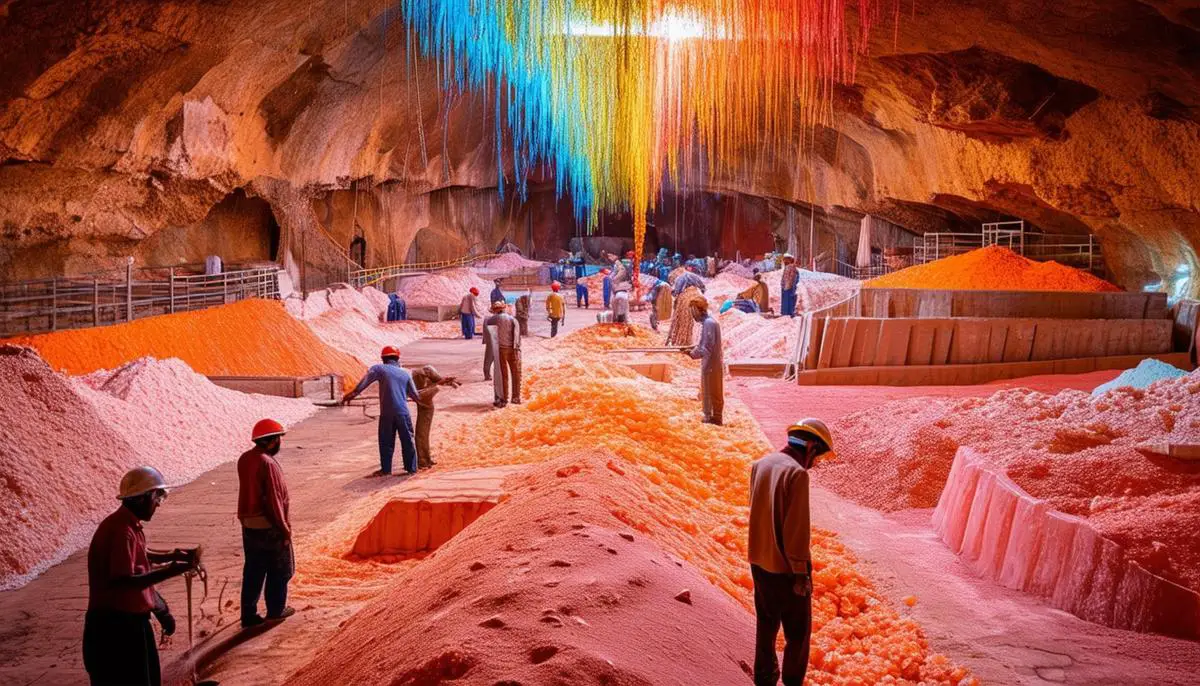
Health Claims vs. Scientific Evidence
Many proclaim that Himalayan salt offers health advantages ranging from enhancing respiratory health to delivering detoxifying effects and contributing to mineral intake. These claims often stem from the belief that because it is minimally processed and contains various trace minerals, it must provide significant health enhancements. Let's examine these assertions and compare them with scientific research.
One popular assertion about Himalayan salt is its claimed benefit for respiratory conditions. Proponents argue that inhaling its particles could help alleviate symptoms of asthma and other respiratory illnesses. However, clinical studies necessary to conclusively link Himalayan salt to respiratory health improvements are limited and largely inconclusive.
Regarding the detoxification properties attributed to pink salt, enthusiasts suggest that its minerals can help remove toxins from the body. Unfortunately, these assertions lack robust evidentiary support. The liver and kidneys are the body's natural detox organs, and there's little evidence that Himalayan salt significantly enhances their performance.
Another argument for the integration of Himalayan salt into diets is its supposed aid in supplementing mineral intake. While it contains numerous minerals, the concentration of these elements is quite low. Scientific evaluations indicate that the trace amounts of additional minerals found in Himalayan salt are not adequate to achieve noticeable health benefits when compared to the recommended daily allowances provided by a balanced diet.1
Although Himalayan pink salt can add aesthetic and flavor distinctions to culinary creations, its health benefits should be approached with caution. Health claims require a rigorous scientific basis and should not solely rely on traditional uses or widespread beliefs. While enjoying the unique taste and look of Himalayan pink salt, one should maintain realistic expectations regarding its health benefits, focusing instead on its role within a diverse and balanced dietary regimen.
Culinary and Other Uses
Himalayan pink salt transcends its role as a mere seasoning, blossoming into a multifaceted staple in kitchens and homes. Its culinary uses are vast, enhancing the flavor of dishes and contributing a visual appeal that complements the art of plating. When used in cooking, this salt can be incorporated in much the same way as traditional table salt. However, its slightly larger crystals offer a crunch and a burst of saline taste that regular salt can't quite match, making it a favorite finishing touch among gourmet chefs.
In addition to its use as a seasoning, Himalayan salt has carved out a niche in the presentation and preparation of food. A stunning example is the Himalayan salt block, often used as a cooking and serving platter. When heated, these blocks provide an even cooking surface that imparts a subtle salt flavor to whatever is cooked upon them. When chilled, these salt slabs also serve as elegant platforms for serving:
- Sushi
- Fruits
- Ice cream
Beyond culinary exploration, Himalayan salt finds its charm in decorative and therapeutic roles around the home—manifestly so in the form of salt lamps and bath products. Himalayan salt lamps, with their soothing amber glow, claim a spot in living rooms and bedrooms alike. In personal care scenarios, Himalayan pink salt blossoms into bath crystals that promise a spa-like experience. Many turn to these salt-infused baths for their relaxing qualities and the mineral-rich soak they provide, thought to invigorate and purify the skin.
Whether it's finishing off a gourmet dish with a sprinkle of pink crystals, setting a rustic yet elegant vibe with a salt block, or creating a zen sanctuary with a glowing salt lamp, Himalayan pink salt possesses an undeniable allure that goes beyond the kitchen shelf.
Comparison with Other Salts
Compared to other common salts, Himalayan pink salt holds a distinctive stance, particularly when analyzed against sea salt and table salt. Each type of salt has its own process of extraction and mineral makeup, which influences taste and how each is used and perceived in culinary and health contexts.
Sea salt, harvested directly from evaporated seawater, is typically less processed than table salt. It retains a natural hint of brininess reminiscent of the ocean, which can add an extra dimension of flavor to dishes. The mineral content—while more affluent than that of table salt due to minimal processing—usually includes essential minerals like magnesium, potassium, and calcium, albeit in small amounts. However, one important element that is notably absent in most natural sea salts is iodine, an essential nutrient added to most table salts.
Table salt undergoes a rigorous refinement process that strips away most of its impurities and natural minerals. The result is almost pure sodium chloride. To combat the potential for iodine deficiency diseases, iodine is frequently added to table salt, an element that is vital for healthy thyroid function.2 The fineness of table salt makes it ideal for precise seasoning needs and in baking where consistency is crucial.
Himalayan pink salt stands out for its visual appeal and minimal processing, which allows it to retain most of its natural minerals. This adds a subtle complexity to its flavor profile. Though as noted, while it contains over 84 minerals, the concentrations are too small to cause significant health benefits. Iodine is also more or less absent in natural Himalayan salt, similar to most pure sea salts.
Regarding processing methods:
- Himalayan salt is mined and typically washed by hand, without undergoing any chemical processing. This conserves its mineral integrity and natural structure.
- Sea salt's processing, involving natural evaporation under the sun, similarly helps preserve a variety of minerals though not to the extent of Himalayan salt.
- In contrast, heavily refined and kiln-dried table salt includes anti-caking agents to enhance pourability and prevent clumping.
From a culinary perspective, while all salts can essentially achieve the same basic goal of enhancing the flavor of foods, the choice between them often comes down to personal preference regarding texture and subtle taste differences. It may also largely depend on one's health considerations—such as iodine sufficiency or sodium intake preferences.
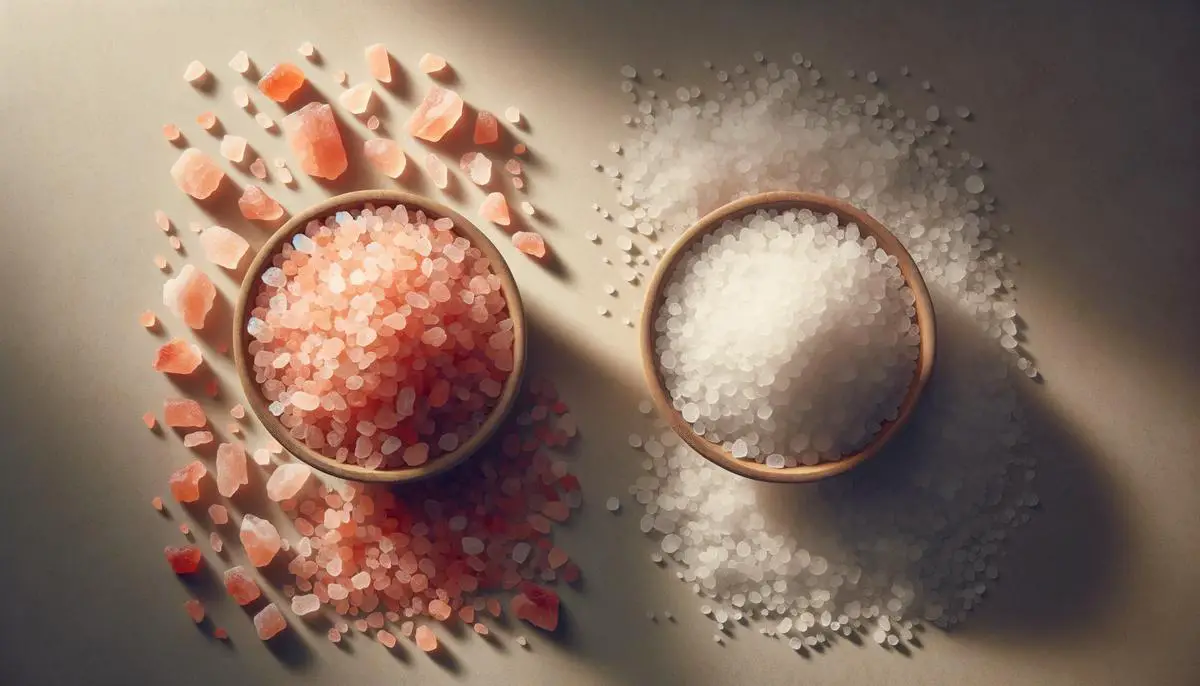
- Schwalfenberg GK. The Effects of Sodium and Potassium on Hypertension, Insulin Resistance, and Blood Pressure Regulation. Can J Physiol Pharmacol. 2017;95(12):1462-1468.
- Iodine Global Network. Global Scorecard of Iodine Nutrition in 2020. Zurich, Switzerland: IGN; 2020.

